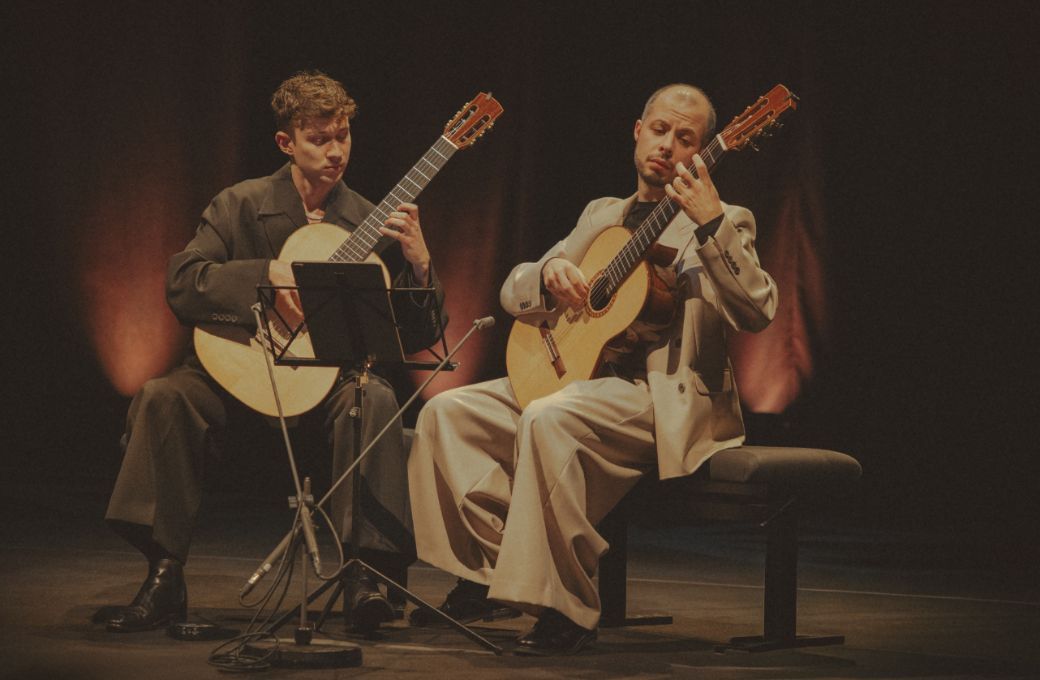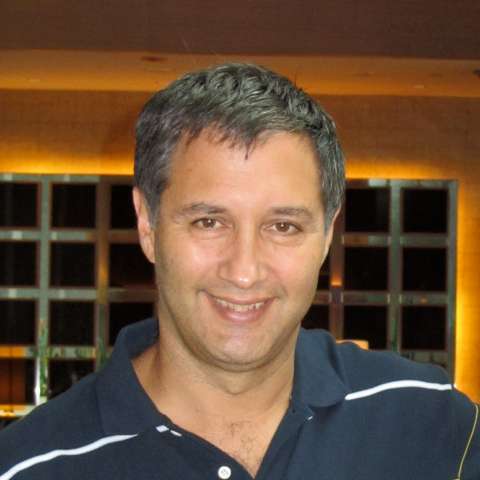Much as I might love classical guitar, the idea of last night’s concert at Cité de la Musique in Paris sounds like insanity: a guitar duo tackling the towering musical edifice that is Bach’s Goldberg Variations. But when you hear Thibaut Garcia and Antoine Morinière playing the Goldbergs, it makes blissful musical sense from the very first notes. And when you read how they went about the project, you realise that this may be madness, but there’s method in it.

Garcia and Morinière have been close friends ever since they were classmates at the Paris Conservatoire and have spent much of the last 15 years fascinated by Baroque keyboard music. Eventually, they took their desire to play the Goldbergs seriously enough to have a pair of twin guitars made for them specially for the project (which comprises both a recording and a concert tour). What they have done is effectively to create a single four-handed instrument and to unite themselves into a single four-handed performer in order to play it.
Compare this instrument to the harpsichord for which the Goldbergs were composed or the piano on which they are often played and you will realise how distinctive are its characteristics. Like the harpsichord, this is a plucked instrument, with the vivacity and attack on each note that a piano cannot replicate. But unlike the harpsichord, the shape of every note is under individual control of the performer’s fingers: its dynamic contour, its attack and decay, its vibrato, the point at which it is damped. This gives two crucial possibilities. First, any individual note can be sculpted into a thing of beauty, which Garcia and Morinière made evident from the very first notes of the opening Aria. Second, the control over decay and damping means that notes can be kept clearly distinct even in the fastest, most densely instrumented variations, which need never dissolve into a wash. It’s like hearing the best features of a harpsichord without any of the downsides.
While that all sounds great in theory, the reality is that there are tens of thousands of notes in the Goldbergs. So the feat managed by Garcia and Morinière last night, to apply that level of individual control and musicality to as many of the those notes as possible, was nothing short of mind-boggling. I wasn’t surprised to observe immaculate guitar technique – the relaxed hands and body posture, the precision of the shifts in position up the neck, and so on. I wasn’t even surprised to observe the obvious musical understanding between the pair and how tightly they played together. But the extent to which they curated the sound of every note knocked me sideways. And the result, the way Bach’s music carried you through dance after dance, mood after shifting mood, was a joy.
I could cavil, I suppose. The two of them really do love the gorgeous sounds they can create from letting a note ring high up the neck, or moving from a fretted note to an almost-but-not-quite-similar harmonic, approaching the point of self-indulgence: I could have asked for a little more attention to what would have been left hand passagework in the low register of a harpsichord. But when the sounds created are quite that glorious, I can’t find it in my heart to complain.
Most classical guitar music has its origins in Spanish popular forms or the Renaissance lute repertoire. What Garcia and Morinière have created here is something of a completely different order. I came out of the concert feeling like it should simply have been impossible: are there any other guitarists on the planet who could achieved it?


